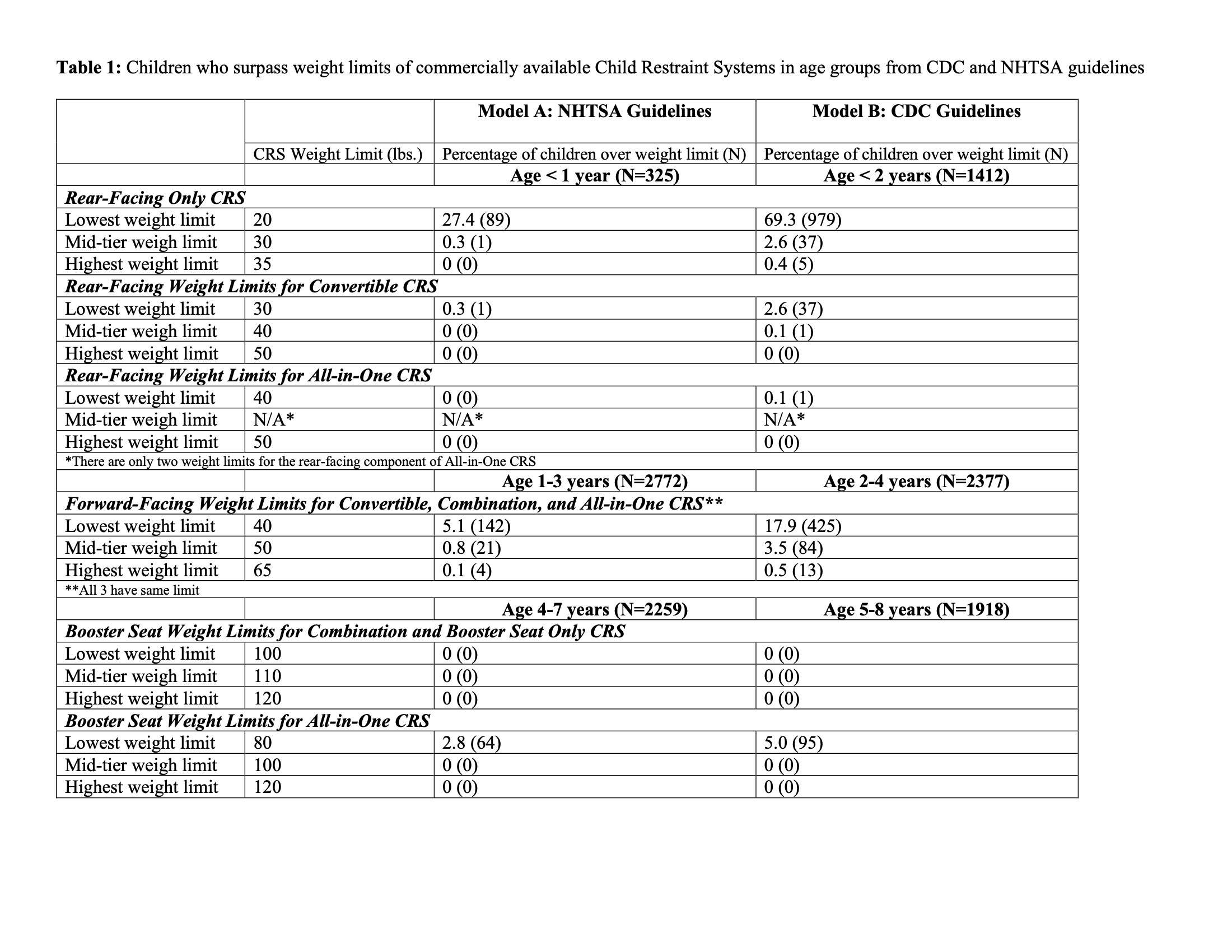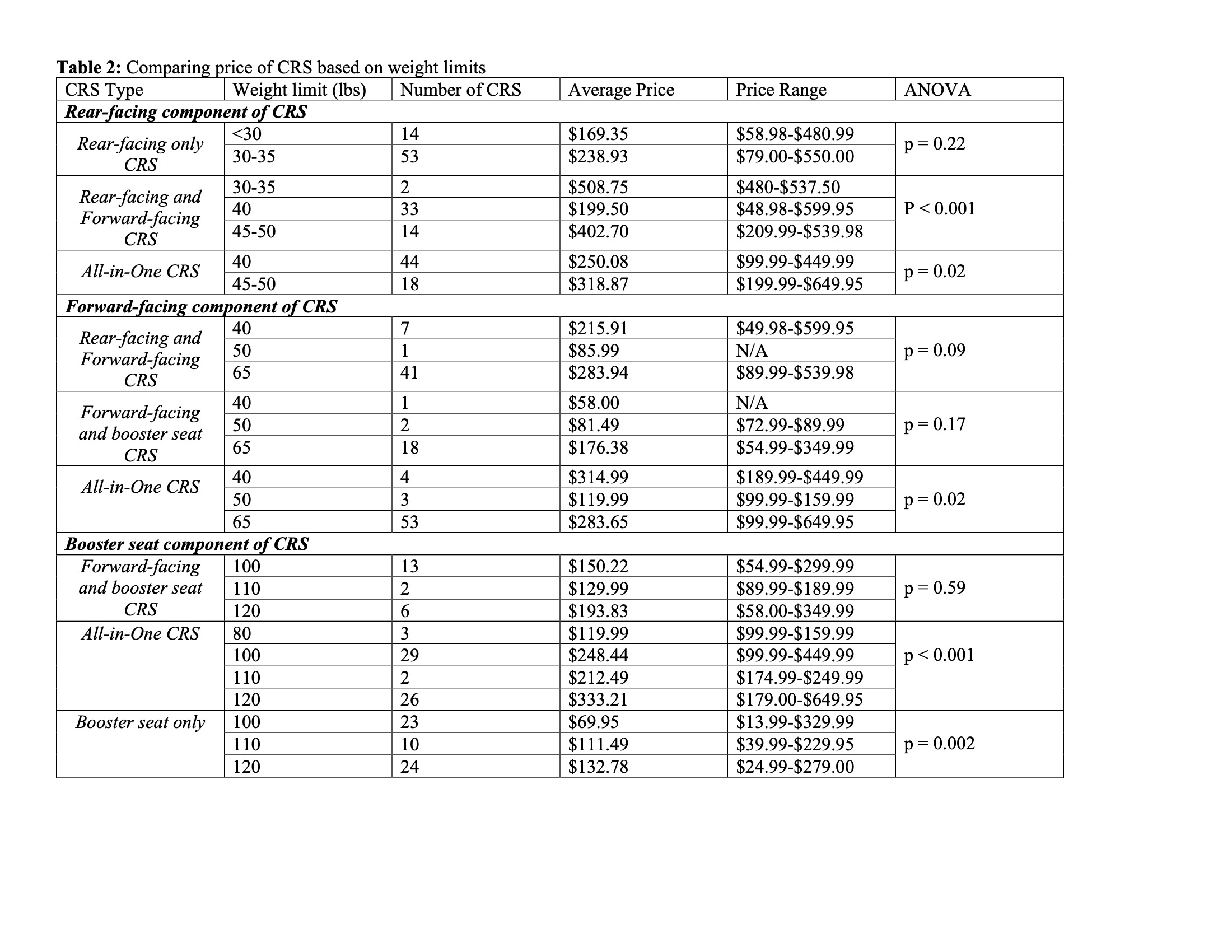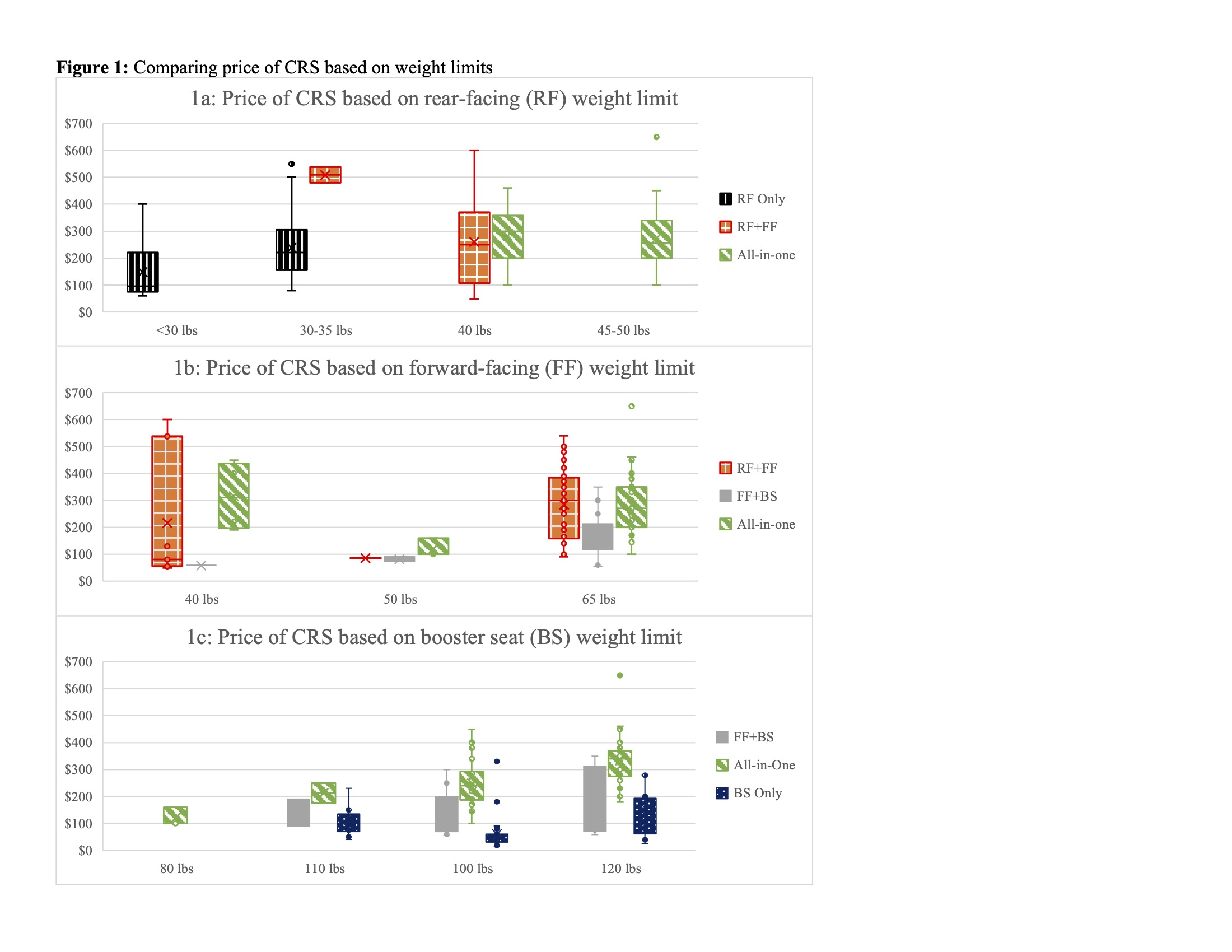Injury Prevention
Injury Prevention 2
322 - Sizing up Child Passenger Safety: Few Children 6 Months to 9 Years Old are Too Heavy to Follow Age-Based Recommendations Using Commercially Available Car Seats and Booster Seats
Monday, May 1, 2023
9:30 AM - 11:30 AM ET
Poster Number: 322
Publication Number: 322.42
Publication Number: 322.42
Ashlyn McRae, Ann & Robert H. Lurie Children's Hospital of Chicago, Chicago, IL, United States; Michelle Macy, Ann & Robert H. Lurie Children's Hospital of Chicago, Chicago, IL, United States

Ashlyn McRae, MD (she/her/hers)
Resident Physician
Ann & Robert H. Lurie Children's Hospital of Chicago
Chicago, Illinois, United States
Presenting Author(s)
Background: Weight-based child passenger safety guidelines encourage use of each restraint type until the child meets the size limits of their child restraint system (CRS). In a 2009 study, up to 20% of children were too heavy for age-appropriate rear-facing (RF) and forward-facing (FF) child restraint systems (CRS). The few CRS models that accommodated heavier children were more expensive. Since then, weight limits for RF and FF CRS have gone from 20 to 50lbs and 40 to 65lbs respectively. This calls for an updated assessment of child weight relative to the weight limits and price-points of commercially available CRS.
Objective:
(1) Determine the proportion of children who are above the typical CRS weight limits for age-based guidelines from the National Highway Traffic Safety Administration (NHTSA) and Centers for Disease Control and Prevention (CDC) (2) Compare CRS prices by weight limit categories.
Design/Methods: We analyzed child age and weight data collected from patients 6mos-10yrs and < 57” tall seen for acute care in Chicago and screened for eligibility for the Tiny Cargo, Big Deal trial. CRS weight limit and price data were obtained from an American Academy of Pediatrics website. Using the aged-based guidelines, we determined the proportion of children within each age group who were too heavy for the recommended CRS. We compared prices of CRS by weight limit using ANOVA Single Factor Test. Data were analyzed in RStudio and Microsoft Excel.
Results: We analyzed data for 5,707 children. Table 1 presents the number and proportion of children above CRS weight limits using NHTSA and CDC guidelines. Using NHTSA guidelines, 27% of children < 1yr were >20lbs, the lowest weight limit for RF CRS, and none weighed 50lbs, the highest weight limit. Of children 1-3yrs, 5% were >40lbs, the lowest weight limit for FF CRS and < 1% were >65lbs, the highest weight limit. Of children 4-8yrs, 3% were >80lbs, the lowest weight limit for booster seats, and none weighed >120lbs, the highest weight limit. Using CDC guidelines, 69% of children < 2yrs were >20lbs and only five weighed >50lbs. Of children 2-4yrs, 18% were >40lbs and < 1% weighed >65lbs. Of children 5-9yrs, 5% were >80lbs and none weighed >120lbs. CRS prices vary by weight limit and there are models with lower price-points for each CRS type that accommodate heavier children (Table 2 and Figure 1).
Conclusion(s):
Over the past decade, CRS have become more accommodating of heavier children and more affordable. Pediatricians should be aware that weight is rarely a barrier to the use of RF CRS until at least 2yrs, FF CRS until 5yrs, and booster seats through 9yrs.



